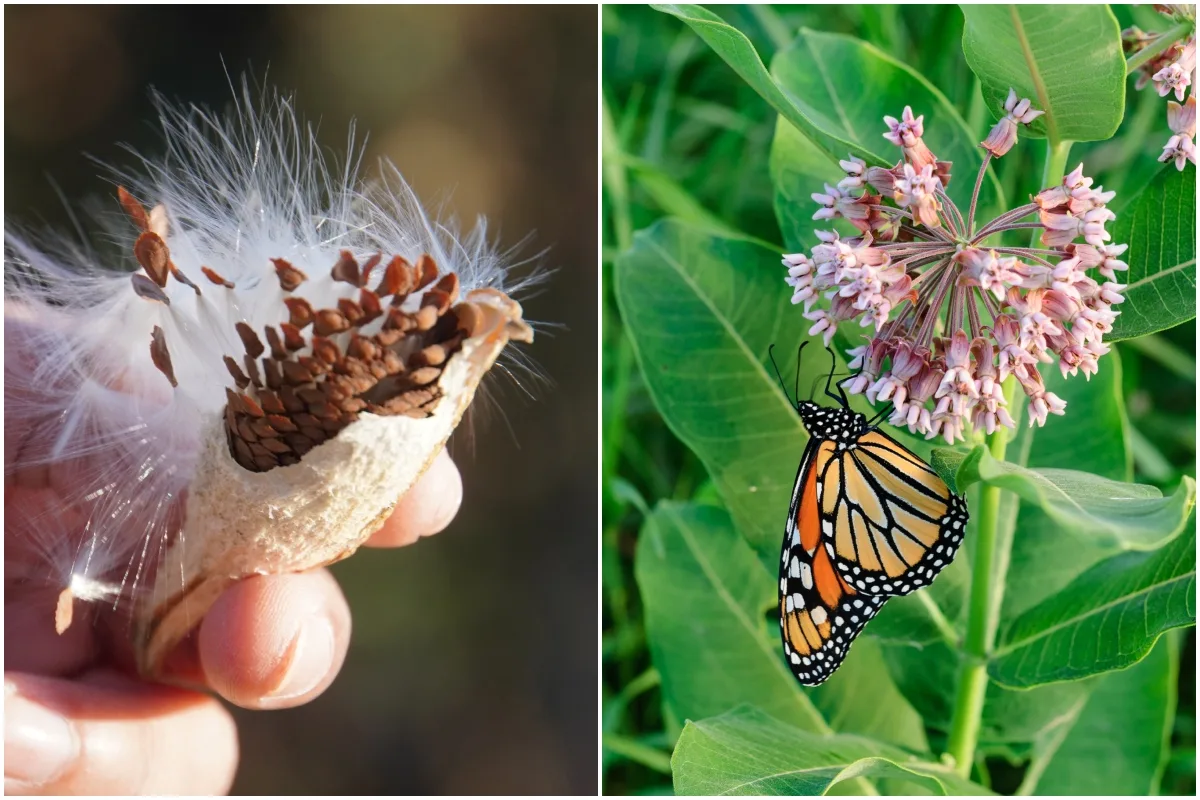
Ask any child over seven, and I’ll bet they can tell you what plant the Monarch butterfly eats.
At 43 years old, I still remember learning about the Monarch butterfly’s life cycle in Mrs. Potter’s second-grade class. The caterpillars eat milkweed, the only thing they eat in their larval stage.
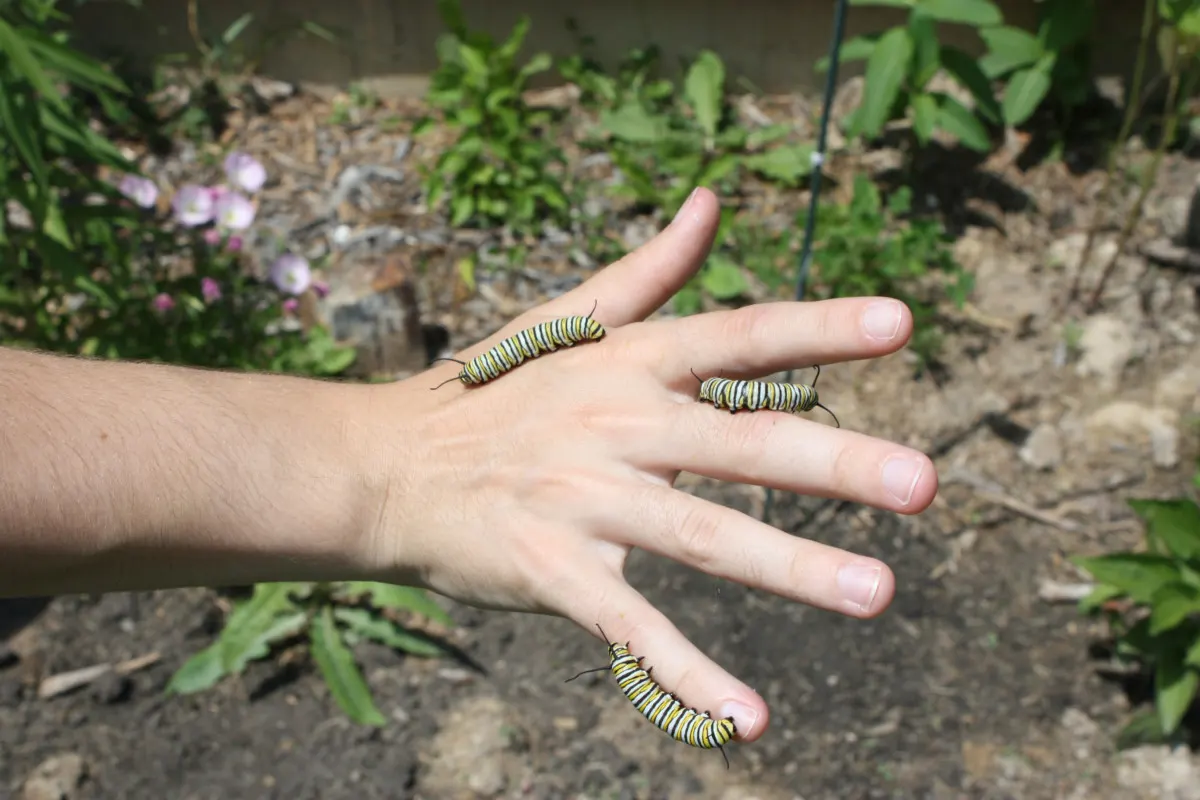
Somehow, we forgot this lesson over the years, as we’re seeing a massive decline in Monarch butterfly numbers due to the loss of native milkweed. Folks everywhere, including many parents of seven-year-olds, are asking what they can do to help.
Luckily, it’s as easy as growing milkweed in your backyard.
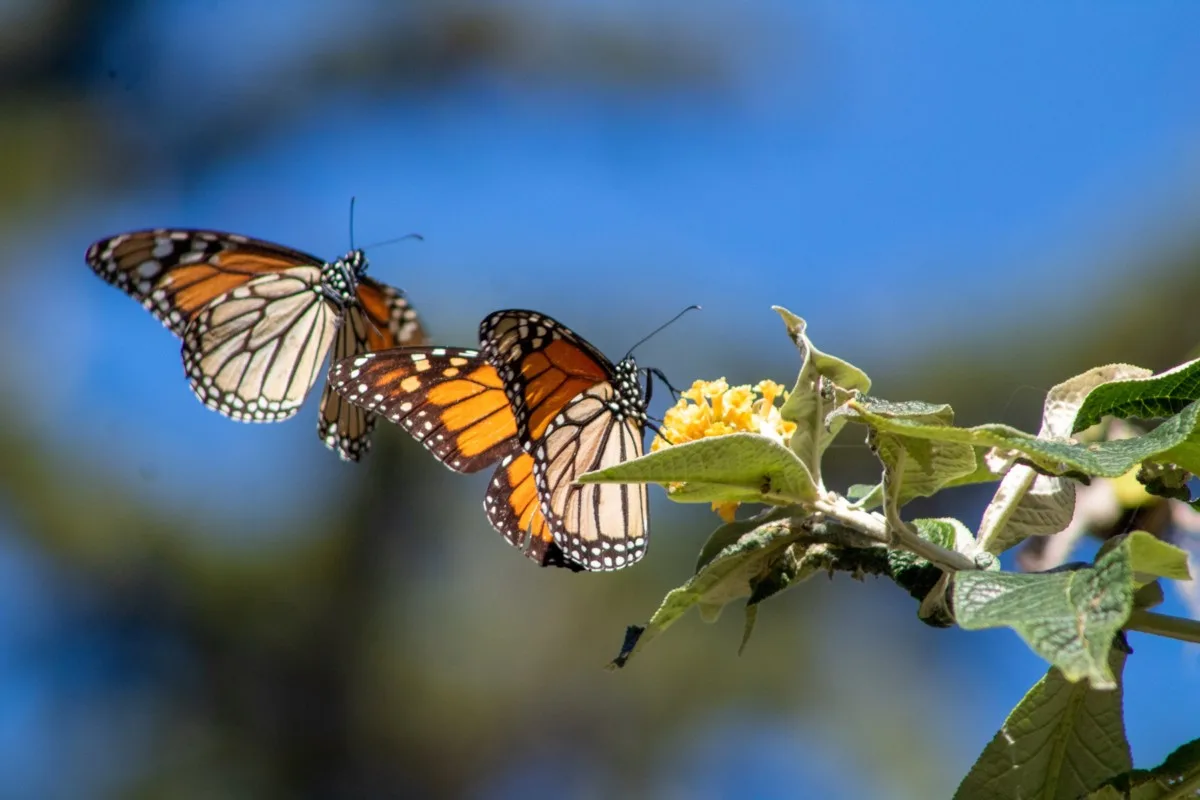
What Happened to All the Milkweed?
Humans have this habit of labeling plants as good or bad on their usefulness to us. Usually, we make it our life’s mission to get rid of the bad ones – the weeds.
It’s only in the past few decades, as we’ve watched pollinators disappear at alarming rates and insect populations decline on the whole, that we’ve started to realize those plants are pretty important.
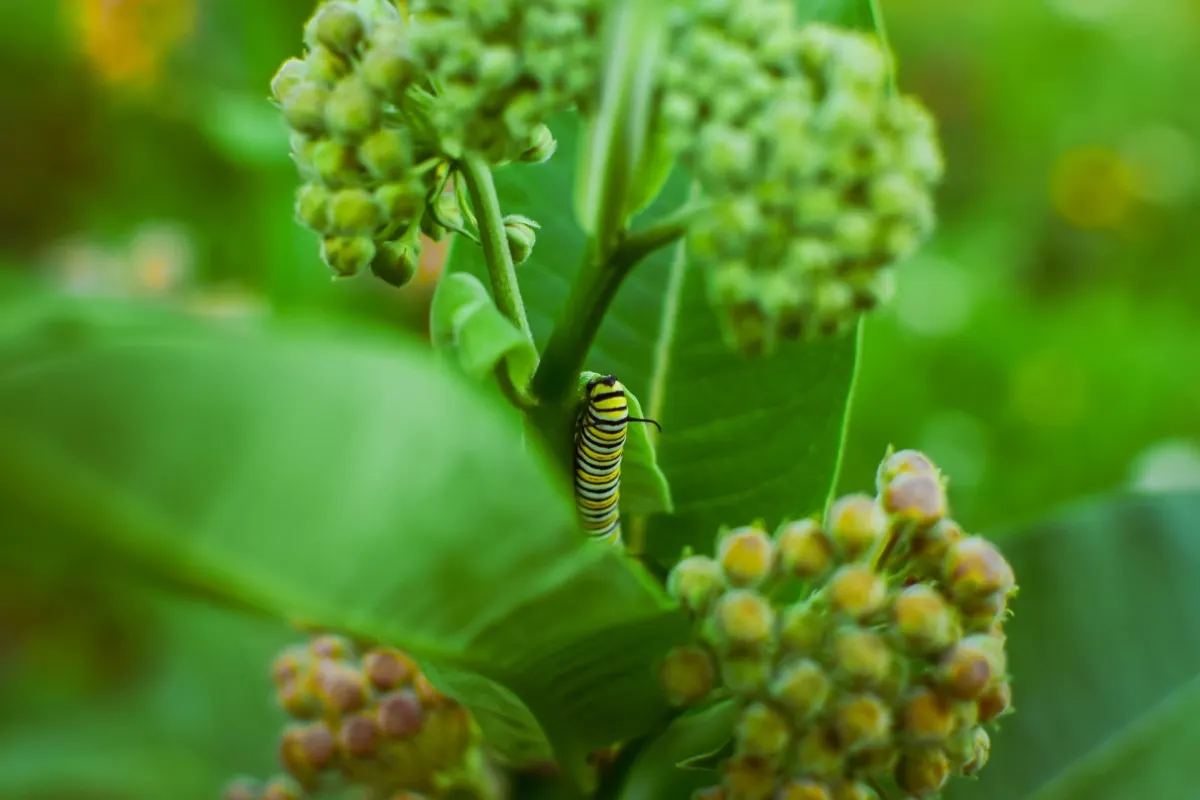
The three biggest culprits for milkweed loss are agricultural growth, urban development and roadside vegetation management. And most of this comes down to the abundant use of glyphosate, the most commonly used herbicide.
By far, the biggest culprit in the loss of milkweed is the agriculture industry through commercial farming.
No matter your views on eating GMOs, it’s clear their existence is causing environmental problems. Back in the late 1990s, my favorite corporation to hate on, Monsanto, released two brilliant new crops – glyphosate-resistant soybeans and glyphosate-resistant corn. The crops were genetically engineered to stand up to the herbicide application. So you could plant acres and acres of corn and soybeans and then spray those acres and acres with glyphosate and not have to worry about it destroying your crop.
Instead, it destroyed milkweed habitat, 120 million acres across the Midwest. Just by clearing and planting that land, we lost a lot of milkweed habitat. But by planting all that farmland with these genetically engineered crops and then spraying those fields year after year with glyphosate, we’ve made it nearly impossible for milkweed to grow in them.
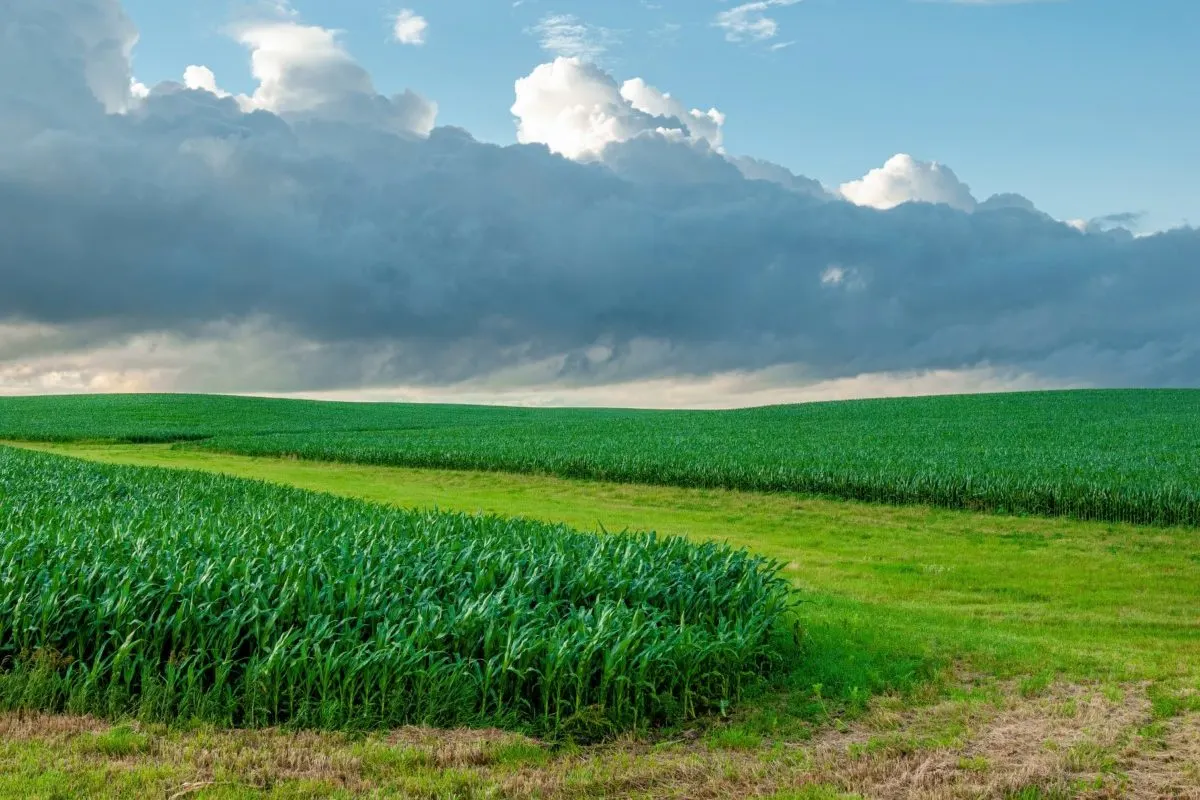
“According to researchers, the utilization of these GE crops has all but eliminated milkweeds from these fields”
beyondpesticides.org
While that might be great if you’re a farmer, it isn’t very good if you’re a Monarch butterfly.
Milkweed is Important to More Than the Monarch
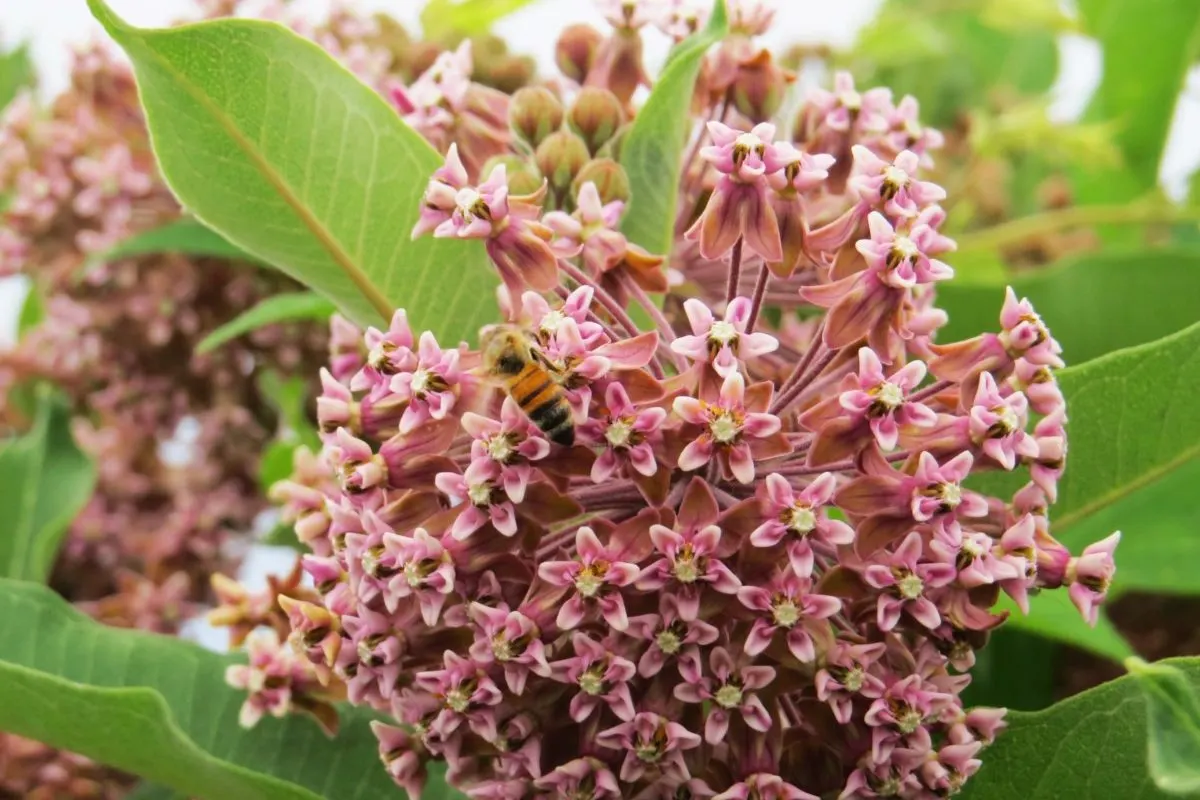
Milkweed is important to the Monarch because it’s the only food the caterpillar will ingest. But many other insects feed on milkweed, most being native bees. Other butterflies and moths beyond the Monarch also prefer to nibble milkweed leaves.
Even predatory insects beneficial to gardeners everywhere can be found sipping nectar from milkweed. Bugs like aphid mites, the braconid wasp and the assassin bug, can all be found on a cluster of milkweed flowers.
What Milkweed Should I Grow?
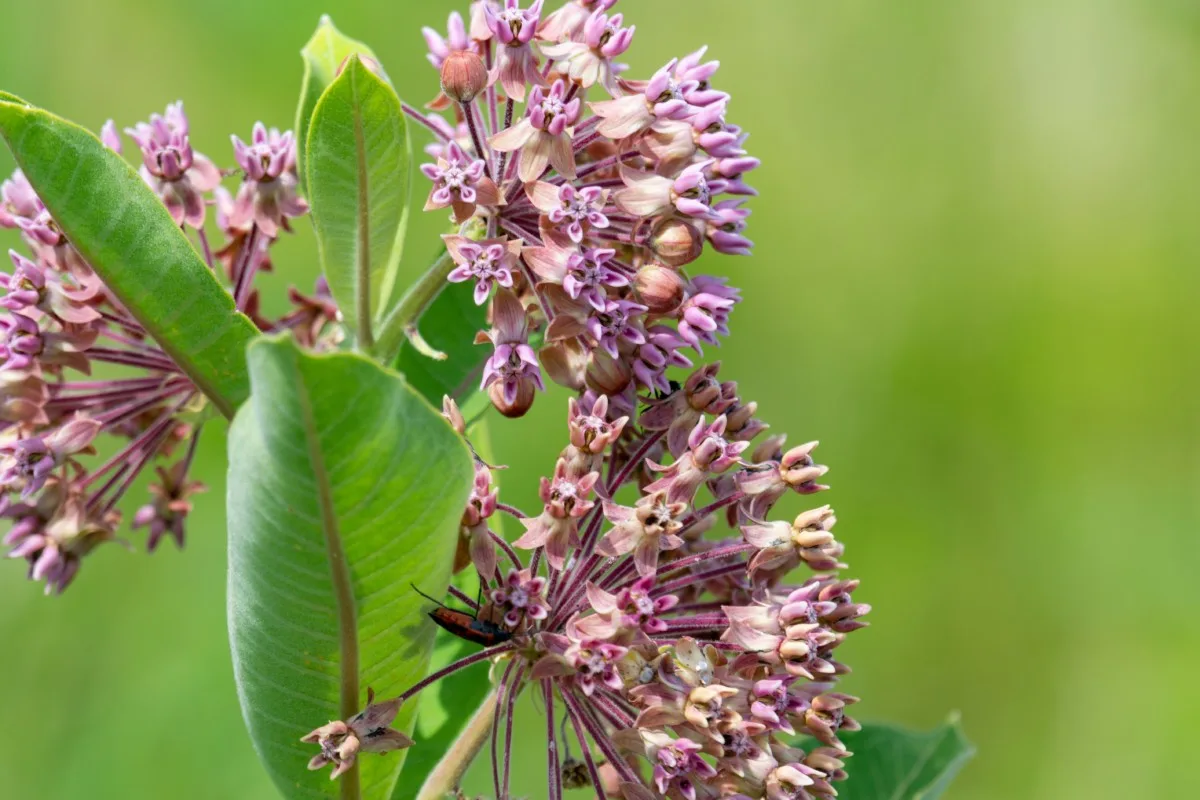
Monarch butterflies eat two types of milkweed – Common milkweed (Asclepias syriaca) and Butterfly weed (Asclepias tuberosa). But there are over 70 species of milkweed native to the United States and Canada. Once you take care of the Monarch’s needs, consider planting another milkweed native to your region. You can reach out to your local extension office for more information.
Where Can I Get Milkweed Seeds?
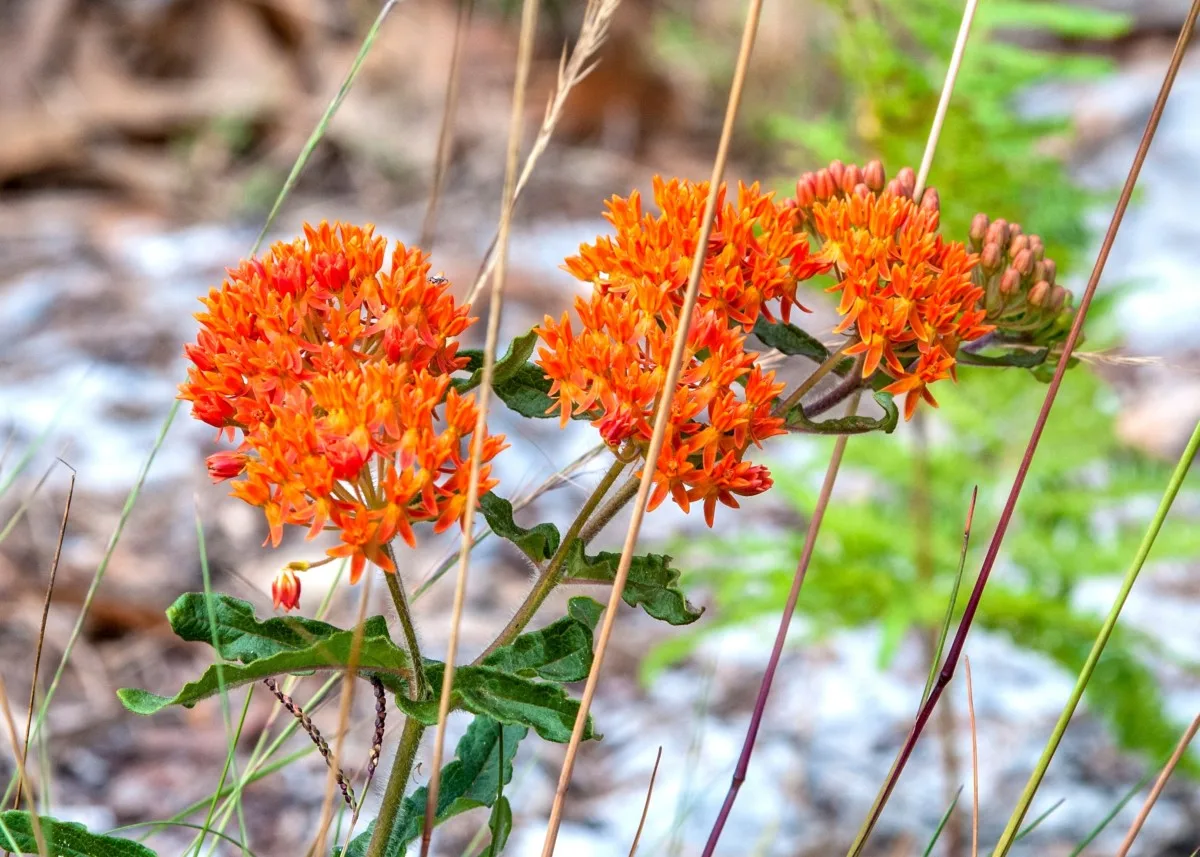
Thanks to concerned conservationists, more native seed suppliers are propagating milkweed for seed collection and distribution. A few reputable sources for milkweed seed are:
Rare Seeds – Baker Creek Heirloom Seeds
Of course, the easiest way to source milkweed seeds is to go outside and look for them.
How to Harvest & Save Milkweed Seeds
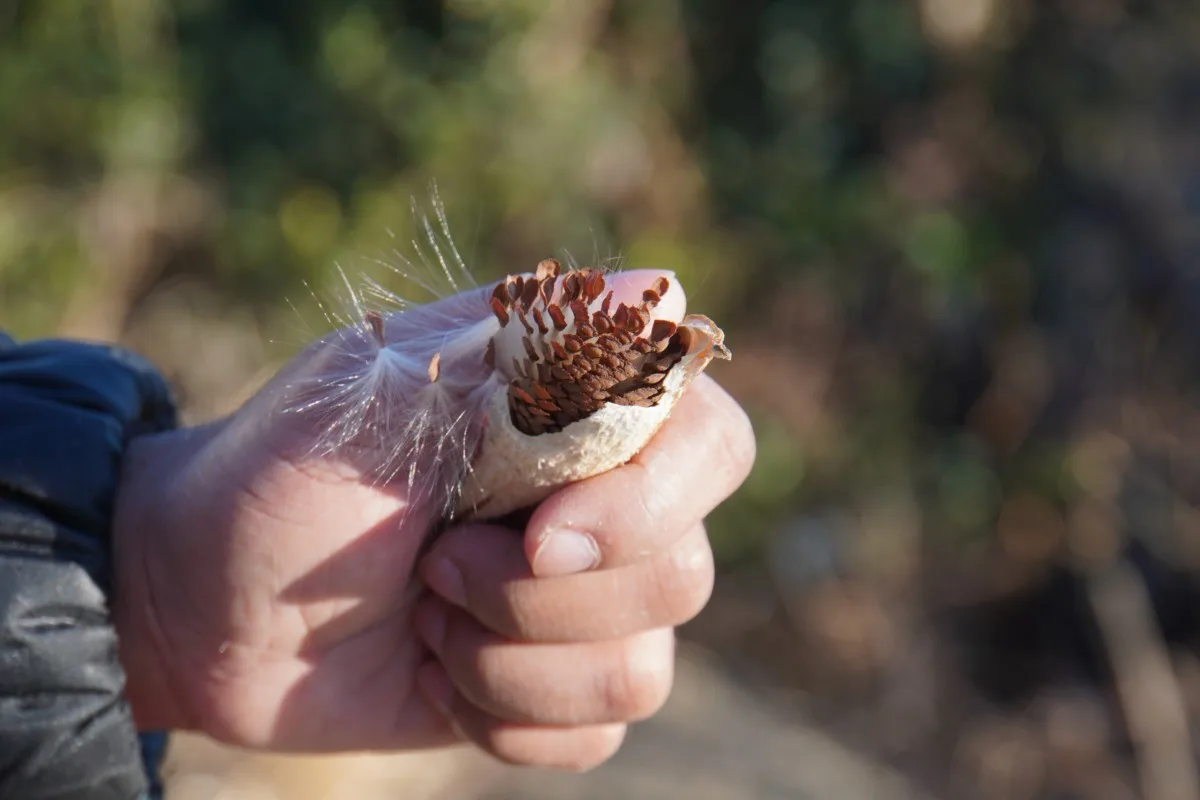
Before you head out to collect milkweed seeds, it’s important to know that the sap from milkweed is an irritant. Consider wearing gloves if you have sensitive skin. Always wash your hands well after handling milkweed if you don’t wear gloves.
Collect milkweed seed pods in the fall. You may need to check them a few times to see when they’re ready. If you pick them too soon, the seeds won’t be viable. The seeds must be dark brown. If you pop open a pod to find white or light brown seeds, you’ve picked it too soon.
Look for brown pods that are just starting to crack open. Of course, if you wait too long, you’ll find an empty pod, as the wind will have done its job.
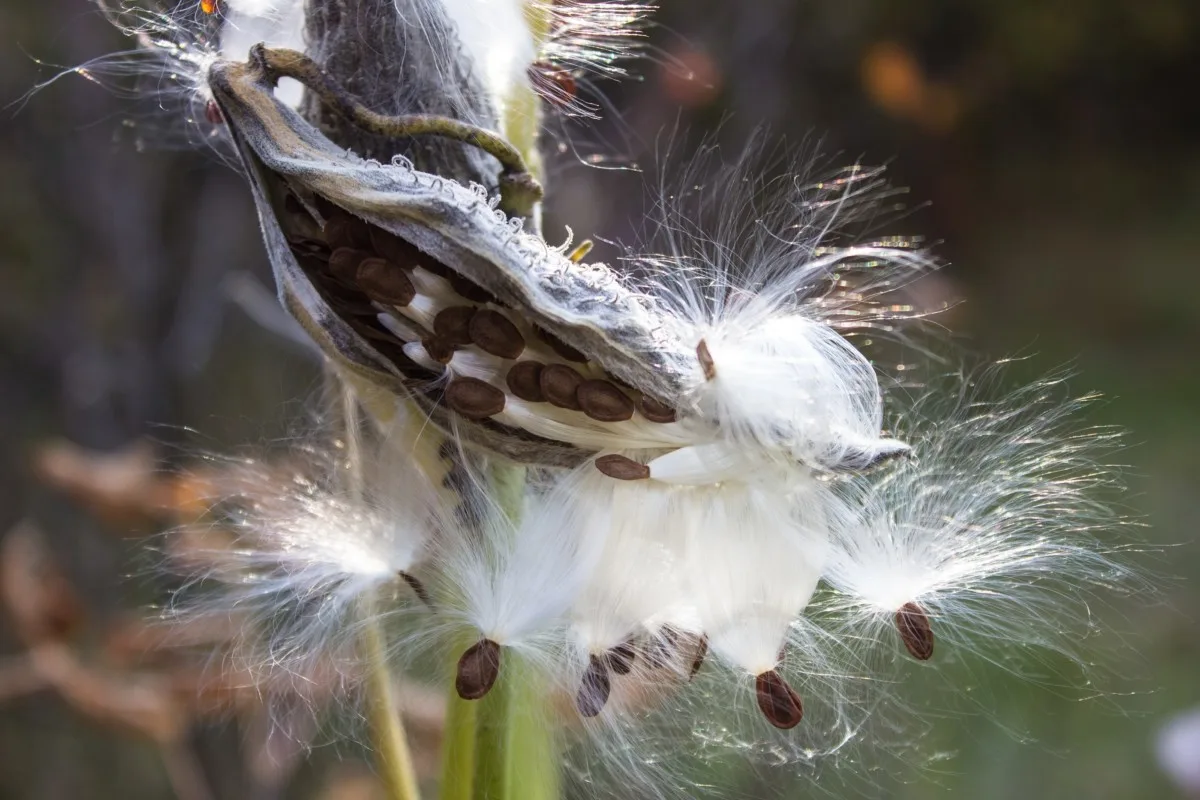
Separate the seeds into a bowl and allow them to dry thoroughly. You can store them in a paper bag while waiting for them to dry.
There are plenty of recommendations on the internet for how to remove the fluff from milkweed seeds. I find this bizarre. Nature plants milkweed every year with the fluff attached. Why go to all the trouble of removing that tiny bit of silk attached to each seed? It makes a great handle when you’re plucking out individual seeds to plant.
If you feel you must remove the fluff, place the seeds in a paper bag with a few pennies and give it a good shake. Snip a corner off the bag and shake out the clean seeds.
Store your completely dry seeds in an airtight container in the fridge.
Vernalized Seeds – Plants Sense the Seasons
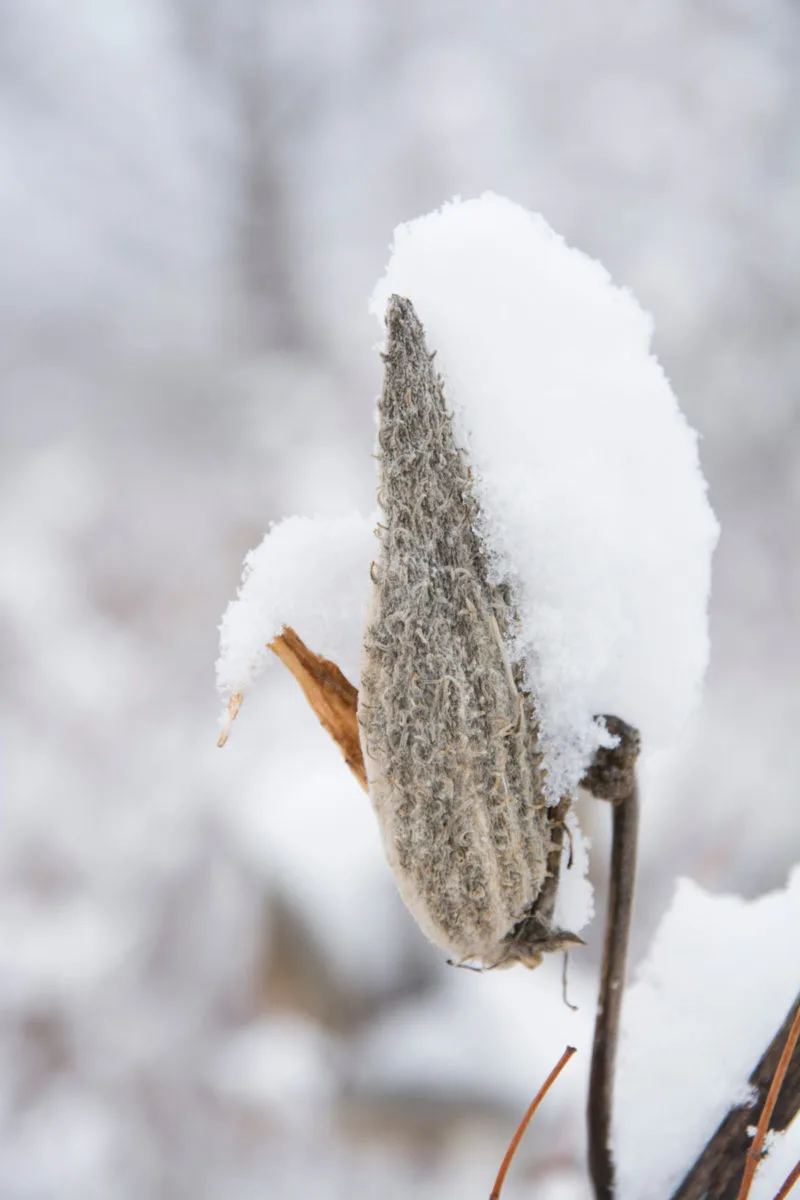
Milkweed seeds need to go through a process called vernalization. Basically, a plant needs to experience winter via environmental cues to time important reproductive development – such as flowers. If the seeds don’t experience prolonged exposure to cold temperatures, the plant won’t germinate and produce flowers.
This is why those on the east coast can plant bulbs in the fall and have flowers in the spring, but west coasters with milder winters need to put their bulbs in the fridge for six to eight weeks.
Since we’re collecting the seeds before they get to winter over outside, they’ll have to experience winter in our refrigerator. Be sure to store them in a completely airtight container so moist air doesn’t get in and cause your seeds to rot. If you purchase seeds online, note whether the seeds are vernalized or not.
Vernalization vs. Stratification
These are both scientific terms that involve how plants experience winter. This extended cold signals seasonal plant changes, triggering different developmental changes. Many people have heard of stratification before but are unfamiliar with vernalization.
So, what’s the difference?
We won’t get super technical, but it depends on whether a plant produces flowers. Stratification is needed for seeds to germinate, whereas vernalization is key in flowering plants producing flowers next season. For instance, a pine nut, the seed from pine cones to make baby pine trees, doesn’t produce flowers, so we use the term stratification. As milkweed is a flowering plant, we use the term vernalization even though the plant also needs to be cold-stratifed for the seeds to germinate.
Planting Milkweed Seeds
Milkweed is quite easy to grow and be sown directly. If you’re planting seeds in the spring, be sure they have had a “winter” in your fridge first. If you’re planting seeds in the fall after harvesting them, nature will do the work for you. For the best possible results, I suggest planting seeds in both the fall and the spring.
Surface sow the seeds about ½ an inch apart and cover them lightly with soil. Keep the seeds moist until they have germinated. Once your seeds have sprouted, water them frequently until the plants are established.
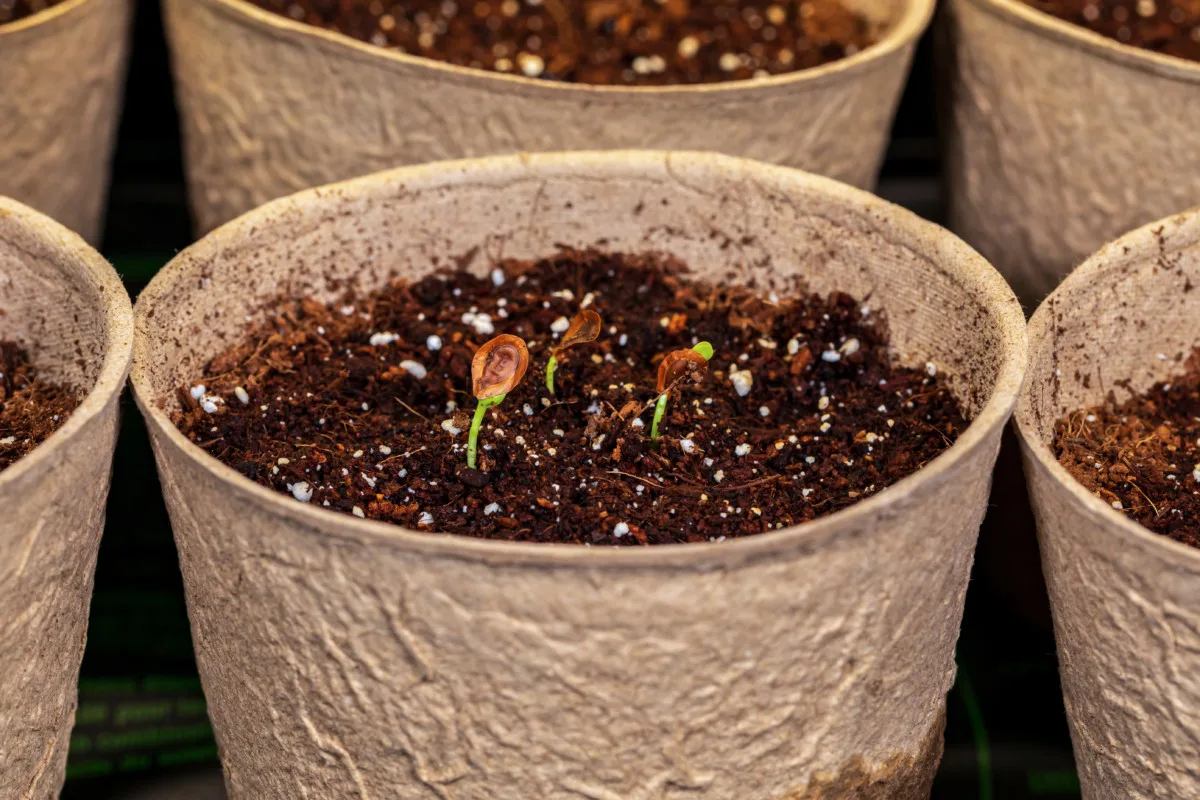
Milkweed transplants well. Consider starting your seeds indoors in the spring to give them the best chance of growing up big and tall so a tiny Monarch caterpillar can munch on them. Don’t forget to harden them off before transplanting them outside once the danger of frost has passed.
Milkweed Bombs
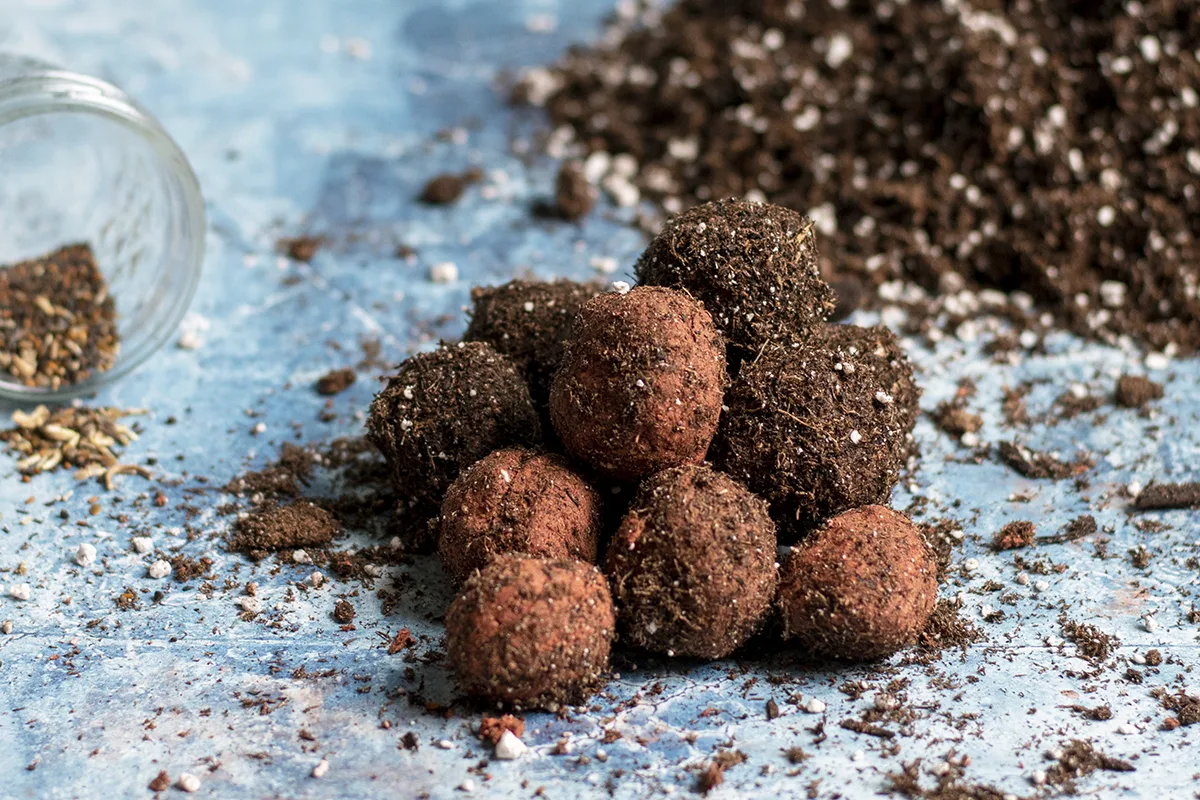
If you want to get militant about saving the Monarch butterfly and take this fight beyond your backyard, it’s easy to do. For over a decade now, guerrilla gardeners have been greening up their local habitats using seed bombs – small balls made up of clay, potting medium and native wildflower seeds. This brilliant method for dispersing native species of plants on the fly can easily be converted to milkweed.
You can use my seed bomb recipe and swap out wildflower seeds for milkweed seeds. However, don’t forget to choose an appropriate native species for your region. You will also need to take into account the time of year you plan to use your bombs to figure out if you need cold stratified seeds or not.
Power to the plants and the butterflies!
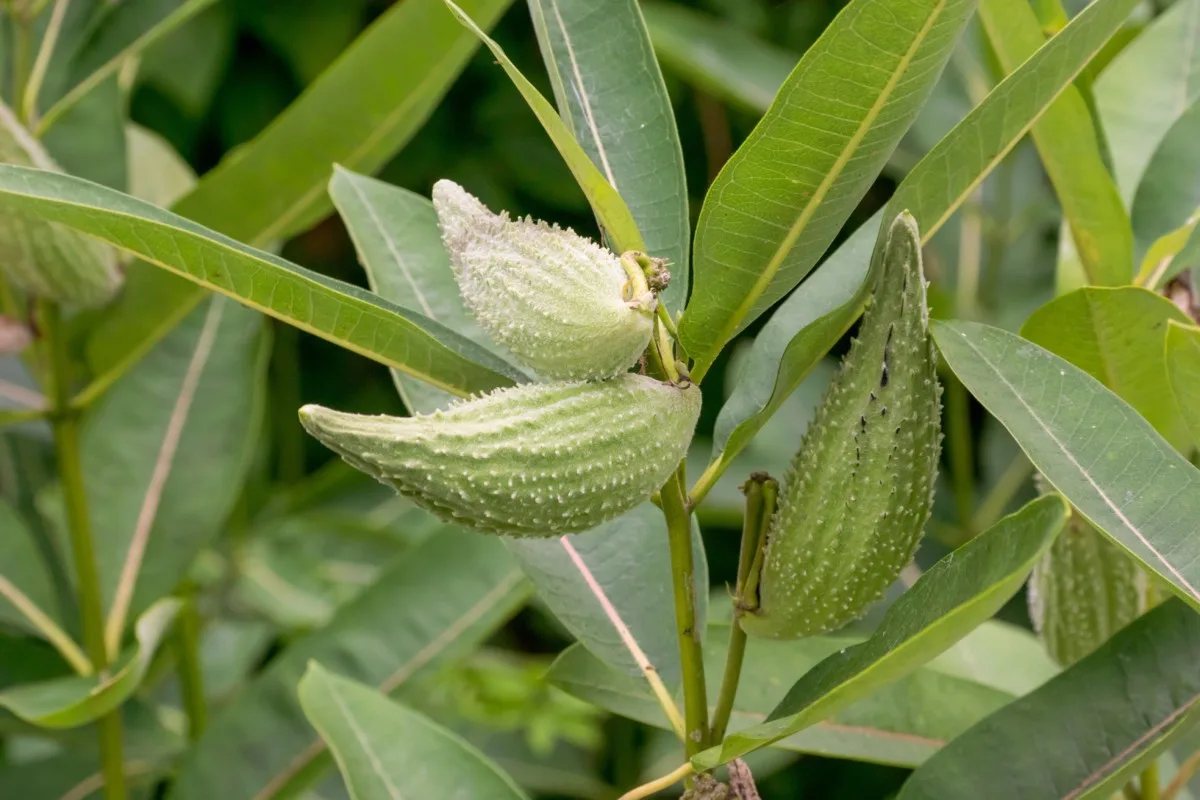
Eating MilkWeed
One of the benefits of growing milkweed is you get to eat it. Because of the decline of milkweed, many foragers opt not to pick it wild. But if you’re growing it in your backyard, you should definitely enjoy a few tender shoots in the spring and new seed pods late in the summer.
As always, when trying new wild foods, only eat a small amount. Moderation is key.
Of course, the Monarch butterfly isn’t the only one whose habitat is threatened. Consider planting other butterfly-friendly plants in your garden.

Get the famous Rural Sprout newsletter delivered to your inbox.
Including Sunday musings from our editor, Tracey, as well as “What’s Up Wednesday” our roundup of what’s in season and new article updates and alerts.

